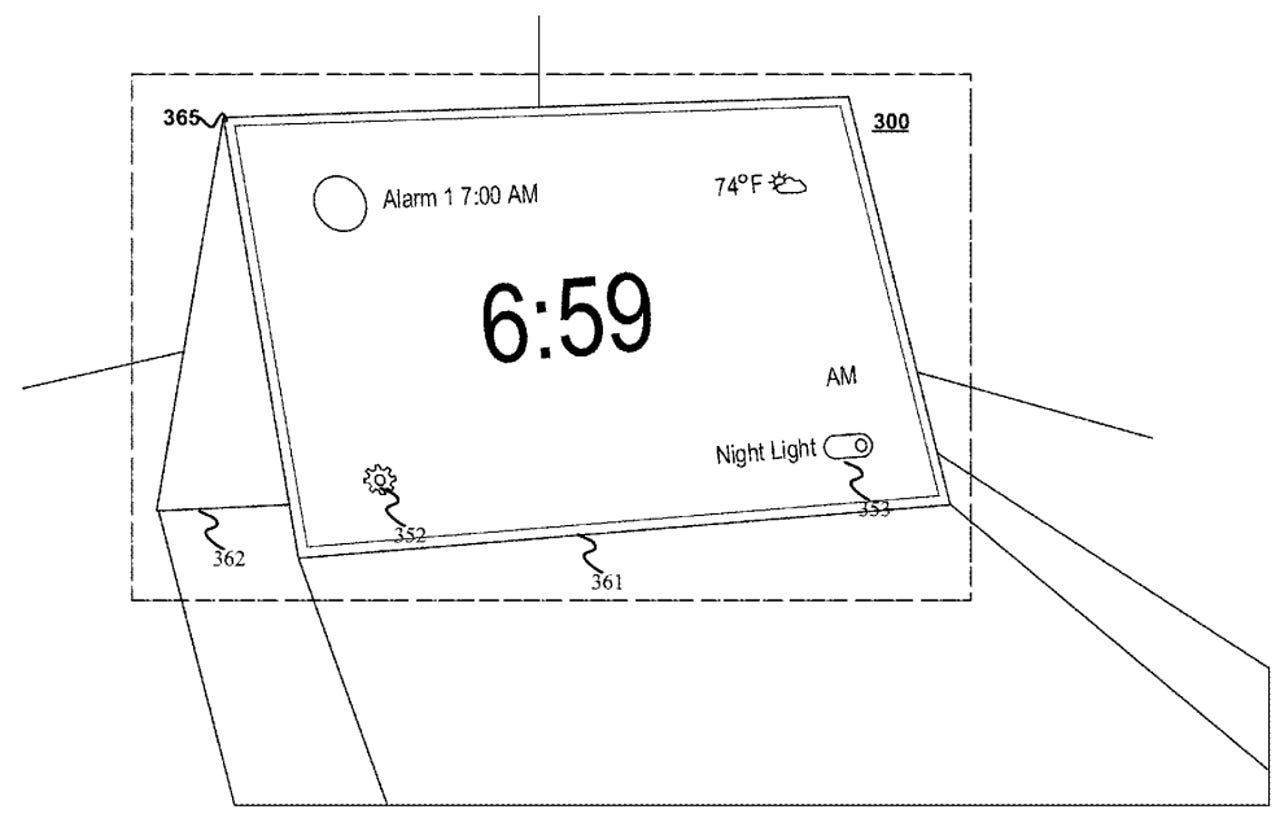Microsoft filed a patent for dual-screen dawn simulation


A patent application published this week has shown another use of a dual-screen, with Microsoft describing using dual screen devices for dawn simulation.
The patent [PDF], Mobile smart device with integrated dawn simulation, was filed by the Redmond giant on 29 December 2017.
As summarised in the patent application, the technology is generally directed to mobile clock devices.
"In one example of the technology, a device includes a first screen, a second screen, and a controller," Microsoft wrote. "The second screen is physically coupled to the first screen, and is facing a different direction than the first screen."
The controller is configured to cause the first screen to operate as a clock display.
"The controller is further configured to cause the second screen to provide indirect light such that the indirect light gradually increases beginning at a time proximate to a predetermined time until the predetermined time is reached," the patent continues.
The patent doesn't claim ownership over dual-screen or dawn simulation -- a technique that involves timing lights, often alongside sunrise.
It does however claim ownership of: "An apparatus, comprising a device including a first screen and a second screen that is physically coupled to the first screen, and is facing a different direction that the first screen and a controller that is configured to cause the first screen to operate as a clock display, and further configured to cause the second screen to provide dawn simulation, including providing lighting that increases from a time proximate and prior to a predetermined time to the predetermined time."
Microsoft is yet to officially unveil its rumoured "Centaurus" dual-screen laptop.
Centaurus, according to sources of ZDNet's Mary Jo Foley, is a dual-screen laptop that Microsoft has been building in the wake of the shelving of its Andromeda dual-screen pocketable device.
Centaurus is believed to be among Microsoft's first batch of Windows Core Operating System (WCOS) devices.
It is believed Centaurus needs a Windows shell that supports dual-screen hardware, "Santorini", the shell that is part of Microsoft's still-officially-unannounced Windows Lite OS.
RELATED COVERAGE
Microsoft shows off its 'Centaurus' dual-screen laptop ahead of Apple's WWDC
Microsoft's rumored dual-screen Windows device, codenamed 'Centaurus,' seems to be moving ahead, with Microsoft execs showing off protoypes of it internally last week.
Windows, dual-screen devices and shells: Piecing together Microsoft's Chromebook-compete strategy
It's Microsoft codename-apalooza time. How do Lite, Centaurus, Pegasus, WCOS and now, Santorini, all fit into what seems to be Microsoft's evolving Chromebook-compete strategy? Read on.
Microsoft's 'Centaurus' device is yet another potential piece of its Chromebook-compete strategy
Microsoft's successor to its 'Andromeda' dual-screened foldable device is codenamed 'Centaurus.' It's just one element of Microsoft's evolving Chromebook-compete strategy.
Microsoft dual-screen folding device shown in latest patent
Hinged device has two screens and a pop-up button.
Surface Hub 2 and the future of Windows (TechRepublic)
Microsoft's rethinking of Windows is starting to emerge from the shadows.